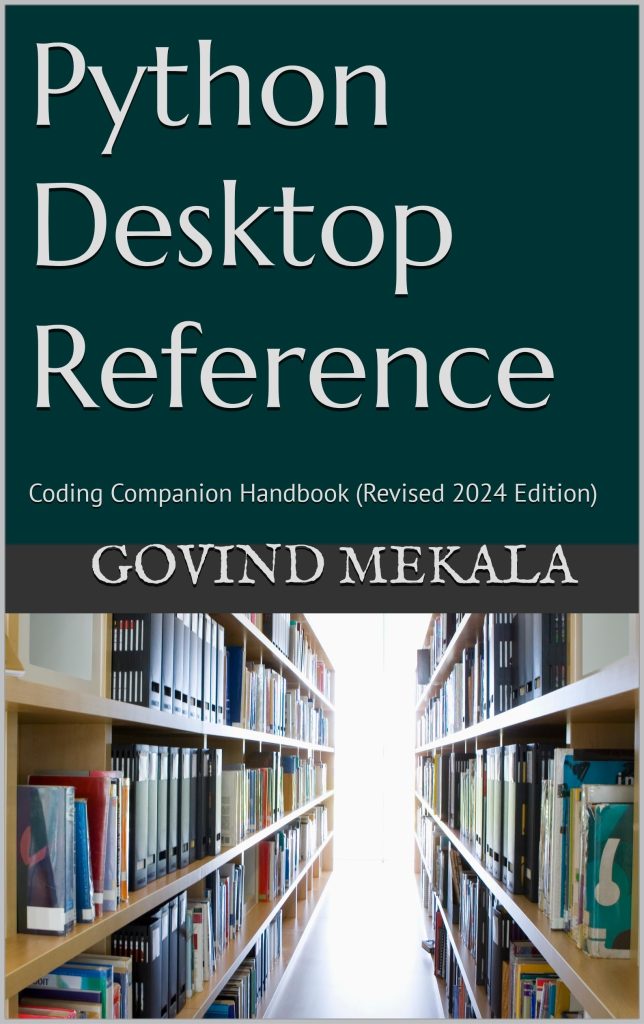
The http.cookies.Morsel class is a somewhat enigmatic piece of the Python standard library, residing within the http.cookies module. Its primary purpose is to encapsulate a single HTTP cookie, much like a tiny capsule in which various attributes and values live together in a delicate balance. Imagine this morsel as a frosty piece of cake, where the cookie name, value, and attributes like expiration, path, domain, secure, and httponly are layered harmoniously, each contributing to the overall taste of a web experience.
At its core, a Morsel object is a dictionary-like structure, yet it transcends mere data storage. It provides a rich interface to not only store cookie attributes but also manipulate and retrieve them in a streamlined manner. This duality offers both the simplicity of access akin to a dictionary and the complexity of behavior typical of objects in Python.
To instantiate a Morsel object, you could begin by using the Cookie class from the http.cookies module, which under the hood creates Morsel instances for each cookie you define. Here’s how you might see the object take shape:
from http.cookies import SimpleCookie cookie = SimpleCookie() cookie["session_id"] = "abc123" morsel = cookie["session_id"] print(morsel) # Output: Set-Cookie: session_id=abc123
In the above example, the morsel variable becomes a creative vessel that contains not just a name and a value but also a series of methods and attributes waiting to be explored. These attributes include, but are not limited to, expires, path, domain, secure, and httponly. Each of these adds a specific flavor to the cookie, influencing how it behaves and interacts with web browsers.
For instance, let’s consider the expires attribute. By default, cookies can be ephemeral, disappearing like morning mist when the session ends. However, by setting an expiration date, you can gift your cookie a longer life, allowing it to persist in the user’s browser even after they close their session. This can be done as follows:
morsel["expires"] = 1681628226 # A Unix timestamp for expiration print(morsel) # Output shows the updated morsel with expiration
But that is only scratching the surface. The true beauty of the Morsel class lies in its ability to manipulate and retrieve these attributes seamlessly. Each morsel can be examined and altered, allowing developers to configure cookie behavior dynamically, shapeshifting it to meet the needs of their web applications.
Thus, the http.cookies.Morsel class stands as a microcosm of the broader world of HTTP cookies, encapsulating the intricacies of web state management and sessions within its carefully architected structure. It’s a testament to how the mundane act of managing cookies can be elevated into a dance of attributes and behaviors, each morsel contributing to the grand symphony of the web.
Setting Cookie Attributes
Setting cookie attributes is akin to creating the recipe for that delectable cake we imagined earlier. Each ingredient, representing an attribute, must be carefully measured to achieve the desired taste. The Morsel class provides an intuitive way to set these attributes, enabling developers to influence cookie behavior with precision.
When you first encounter a Morsel object, it may feel like a blank canvas, waiting for the artist’s touch. Each attribute can be set directly using the dictionary-like syntax that Morsel supports. Let us look at how to set a few essential cookie attributes to craft the perfect morsel.
from http.cookies import SimpleCookie # Create a SimpleCookie instance cookie = SimpleCookie() # Set a cookie named 'user_id' with a value of 'xyz789' cookie["user_id"] = "xyz789" morsel = cookie["user_id"] # Now we set various attributes for our morsel morsel["expires"] = 1681628226 # Setting an expiration date morsel["path"] = "/" # Making the cookie available site-wide morsel["domain"] = "example.com" # Restricting the cookie to a specific domain morsel["secure"] = True # Forcing secure transmission over HTTPS morsel["httponly"] = True # Restricting JavaScript access to mitigate XSS attacks # Output the configured morsel print(morsel) # This will show the complete Set-Cookie header format
In this code, we’ve woven together several attributes. The expires attribute dictates the lifespan of the cookie, while path and domain control the scope of the cookie, determining where and when the cookie should be sent back to the server. The secure attribute signifies that the cookie should only be sent over secure channels, adding an extra layer of security, much like a protective frosting on a cake. Similarly, httponly ensures that the cookie remains shielded from JavaScript access, thereby combatting potential security vulnerabilities.
As you explore further, remember that setting attributes on the Morsel class is not merely a mechanical task; it is an art form, crafting the interaction between your web application and the user’s browser. Each attribute you set is a brushstroke on the canvas of HTTP communication, shaping the experience and trust between your application and its users.
With the right concoction of attributes, you can create cookies that are not only functional but also secure and user-friendly, enriching the web experience that stems from the humble cookie. Ah, the interplay of attributes! Like a well-executed recipe, each choice you make enhances the overall flavor, contributing to a virtual banquet of possibilities.
Retrieving Cookie Attributes
As we delve into the realm of retrieving cookie attributes from the Morsel class, we uncover a layered tapestry of interactions collectively forming the essence of how cookies operate within a web application. The retrieval of attributes is akin to unwrapping a beautifully packaged gift, revealing various elements that can impact both functionality and user experience.
Once a Morsel object is instantiated and adorned with attributes, accessing these attributes is elegantly simple. You can apply dictionary-like access patterns to fetch specific cookies or their associated metadata. Allow me to illustrate this through code:
from http.cookies import SimpleCookie # Create a SimpleCookie instance cookie = SimpleCookie() # Set a cookie named 'session_id' with a value of 'abc123' cookie["session_id"] = "abc123" morsel = cookie["session_id"] # Set various attributes for our morsel morsel["expires"] = 1681628226 # Setting an expiration date morsel["path"] = "/" # Making the cookie available site-wide morsel["domain"] = "example.com" # Restricting the cookie to a specific domain morsel["secure"] = True # Forcing secure transmission over HTTPS morsel["httponly"] = True # Restricting JavaScript access to mitigate XSS attacks # Retrieving cookie attributes print(morsel['value']) # Accessing the cookie value print(morsel['expires']) # Accessing the expiration date print(morsel['path']) # Accessing the path print(morsel['domain']) # Accessing the domain print(morsel['secure']) # Accessing the secure attribute print(morsel['httponly']) # Accessing the httponly attribute
In the example above, you can see that through simple indexing, we retrieve essential cookie attributes. Each call for an attribute—whether it be the cookie’s value, expiration time, or security features—is like a query thrown into the vast digital ether, returning with a treasure trove of context for each morsel.
It is essential to recognize that when querying attributes, the Morsel class behaves with a certain grace, allowing for default values and type safety. If you attempt to access an attribute that does not exist, a KeyError can occur, akin to a misplaced key that won’t unlock the door to your data. To circumvent such situations, you can opt for the .get() method to access attributes safely:
# Safely retrieving cookie attributes
print(morsel.get('httpOnly', 'Not Set')) # Accessing the httponly attribute safely
This method provides a second chance, returning a default value when the sought attribute is unavailable, much like discovering an unexpected treasure in a forgotten chest. This thoughtful design ensures the user experience remains uninterrupted, even when certain details may be elusive.
The beauty lies in the nuanced simplicity of retrieving these cookie attributes. Each call resonates with the intricate dance of web applications and user sessions, revealing the delicate balance of data management and interaction. This capability not only streamlines the process of handling cookies but also enhances the developer’s ability to create responsive, user-centered applications.
As we continue to explore the depths of the Morsel class, we embrace the opportunities it provides for manipulation and refinement. The retrieval of attributes becomes a powerful tool, furnishing the ability to adapt cookies to the needs of dynamic web environments, crafting experiences that are as tailored as they are delightful.
Modifying Cookie Attributes
from http.cookies import SimpleCookie # Create a SimpleCookie instance cookie = SimpleCookie() # Set a cookie named 'user_id' with a value of 'xyz789' cookie["user_id"] = "xyz789" morsel = cookie["user_id"] # Setting initial attributes for our morsel morsel["expires"] = 1681628226 # An expiration timestamp morsel["path"] = "/" # Accessible site-wide morsel["domain"] = "example.com" # Domain restriction morsel["secure"] = True # Security flag morsel["httponly"] = True # Prevents JavaScript access # Print initial morsel attributes print(morsel)
When it comes to modifying cookie attributes, the Morsel class showcases its versatility and elegance. Whether it’s adjusting the expiration time or toggling the secure flag, the ability to modify these attributes empowers developers to respond to the continually shifting landscapes of web interaction and user behavior.
Imagine you want to extend the lifespan of a cookie. You can simply reassign the expires attribute, setting it to a new value that reflects the desired longevity. This change ensures that your cookie remains relevant in a world where ephemeral sessions can quickly become tedious for users who wish to linger in their web experiences.
# Modify the expiration of the 'user_id' cookie morsel["expires"] = 1681631826 # New expiration timestamp # Print the updated morsel print(morsel)
In this snippet, the morsel’s expiration attribute has been updated, allowing the cookie to persist even longer. It’s a simple operation, yet it subtly underscores the developer’s intent to prioritize user experience.
Furthermore, modifying the path and domain attributes can reshape the accessibility of cookies. A developer might decide that a cookie should no longer be available site-wide but confined to a specific directory. To make such a change, one might do the following:
# Restricting the cookie's path morsel["path"] = "/specific-directory/" # Print the modified morsel print(morsel)
This alteration effectively narrows the cookie’s reach, ensuring that it’s only sent with requests that fall within the designated path. Such a decision can be crucial when dealing with sensitive information that should not be broadly accessible.
Security considerations often prompt modifications as well. For example, toggling the secure attribute can reinforce the commitment to safe data transmission. If the web application evolves to support HTTPS, the secure attribute should reflect this change:
# Enabling the secure attribute morsel["secure"] = True # Print the modified morsel print(morsel)
In this way, the Morsel class becomes a dynamic participant in the web application’s architecture, allowing attributes to morph as needed while ensuring that security and user experience remain paramount.
Moreover, the httponly attribute can also be modified to shift access permissions. If a change in the application’s security posture necessitates restricting JavaScript access, the following modification suffices:
# Changing httponly attribute to True morsel["httponly"] = True # Print the modified morsel print(morsel)
The act of modification is not merely a mundane task; it holds profound implications. It reflects a nuanced understanding of user needs and security protocols, constantly evolving in response to the digital environment. Thus, the Morsel class not only encapsulates cookie data but also acts as a living testament to the intertwining of functionality and ethical web development practices, shaping the user experience with grace and foresight.
In this world of perpetual change, the Morsel class stands ready to assist developers in molding the attributes of HTTP cookies. Each modification offers an opportunity to refine interactions, optimize security, and create a truly resonant web experience. As we continue to traverse the landscape of cookie management, the Morsel class reveals itself as an indispensable tool, elegantly balancing the myriad demands placed upon it with an artistry that is both powerful and refined.
Deleting Cookies
As we sweep into the intricate domain of deleting cookies, the Morsel class becomes an intriguing partner in this dance, guiding us through the labyrinth of expiration and removal with an effortless elegance. Deleting a cookie is not merely a matter of snipping a string; it is an act of intention, a carefully orchestrated maneuver to communicate to the web browser that the time has come for a particular morsel to exit stage left.
To delete a cookie, one does not simply erase the Morsel object. Instead, we must craft a message indicating its obsolescence by setting its expiration date to a point in the past. Consider it an elegant farewell, a way to ensure that the browser understands the cookie has finished its duty and should be cast aside like an old playbill. Let’s explore this through a simpler example:
from http.cookies import SimpleCookie # Create a SimpleCookie instance cookie = SimpleCookie() # Set a cookie named 'session_id' with a value of 'abc123' cookie["session_id"] = "abc123" morsel = cookie["session_id"] # Print the current morsel print(morsel) # Deleting the cookie by setting the expiry date in the past morsel["expires"] = 0 # Equivalent to a Unix timestamp of 0 print(morsel)
In this snippet, we witness the metamorphosis of our cherished cookie. By assigning the expires attribute to zero, we communicate unequivocally that this morsel is to be discarded. The act of deletion is thus laden with deeper significance—far from being an empty gesture, it encapsulates the very essence of maintaining a healthy web application that respects users’ choices and privacy.
Moreover, note that when cookies are deleted in this manner, each browser may respond slightly differently, and it’s essential to accompany this change with adjustments to other attributes—namely, the path and domain. To completely obliterate all traces, the cookie must be characterized precisely in the same way as when it was originally set:
# Adjusting path and domain to ensure complete deletion morsel["path"] = "/" morsel["domain"] = "example.com" # Print the adjusted morsel with past expiration print(morsel)
This holistic approach guarantees that we are not only signaling the cookie’s end but also preventing lingering remnants that could cause confusion or security concerns. As we weave through the fabric of web applications, the Morsel class provides us the tools necessary for managing not just the lifecycle of cookies, but also the user experience, ensuring that our digital interactions remain clear and well-defined.
Ultimately, the process of deleting cookies is reflective of the larger narrative within web development—the ongoing dialogue between the application and its users. By gracefully removing cookies that have outlived their purpose, we affirm our commitment to a responsive and respectful digital environment. The Morsel class thus stands as a paragon of this philosophy, encapsulating the principles of intentional design and user-centric development in every attribute it manages.
Best Practices for Cookie Management
In the ever-evolving landscape of web development, best practices for cookie management emerge as guiding principles, illuminating the path toward designing secure, efficient, and easy to use applications. The art of managing cookies transcends mere technical implementation; it encapsulates a deep understanding of user needs, privacy concerns, and the dynamic nature of the web.
To begin, a cornerstone of effective cookie management resides in transparency. Users should be informed about the cookies that are being utilized, and the purposes they serve, akin to providing a clear menu before a feast. This transparency not only fosters trust but also aligns with emerging regulations like GDPR, which advocate for informed consent. Implementing mechanisms that allow users to manage their cookie preferences can significantly enhance their experience.
Security, naturally, stands as a paramount consideration. The attributes of the http.cookies.Morsel class can be wielded like a shield. Setting the secure attribute ensures that cookies are only sent over secure channels (HTTPS), thereby fortifying the delicate layers of data being exchanged. Furthermore, the httponly attribute must be employed judiciously; it serves as a protective barrier against cross-site scripting attacks, ensuring that cookies remain inaccessible to JavaScript, much like a tightly sealed vault.
from http.cookies import SimpleCookie cookie = SimpleCookie() cookie["user_settings"] = "dark_mode" morsel = cookie["user_settings"] # Setting security attributes morsel["secure"] = True morsel["httponly"] = True print(morsel)
Next, consider the principle of minimalism. Just as a master chef pares down ingredients to highlight the essence of each flavor, so too should developers limit the use of cookies to what is strictly necessary. Adopting a minimalist approach means avoiding excessive data storage in cookies, which can lead to performance degradation and potential privacy concerns. Instead, leverage server-side storage whenever feasible, allowing cookies to act as ephemeral keys rather than bulky containers of information.
Additionally, employing proper expiration strategies is critical. A cookie with a defined lifespan automatically instills a sense of temporariness, reducing the risk of stale data lingering unnecessarily. By thoughtfully setting the expires attribute, developers can create a well-timed symphony of data—each morsel performing its role with elegance and purpose.
from http.cookies import SimpleCookie import time cookie = SimpleCookie() cookie["session_id"] = "abc123" morsel = cookie["session_id"] # Setting an expiration date in the future relative to the current time morsel["expires"] = int(time.time()) + 3600 # Expires in 1 hour print(morsel)
The path and domain attributes should also be fine-tuned to minimize cookie scope. By limiting where cookies are accessible, developers enhance security and performance while simultaneously respecting user privacy. A cookie meant for a specific section of your application should not have unnecessary reach—think of it as a carefully curated guest list for an exclusive event.
As we revel in the deliciously intricate world of cookies, remember to put user experience at the forefront. Conducting regular audits of cookie usage can uncover inefficiencies, helping developers prune unnecessary morsels and ensure that each cookie serves a definitive purpose. This continuous refinement echoes the iterative nature of web development, where feedback loops lead to gradual improvements and a more seamless experience.
In summation, the realm of cookie management is one that invites both art and science. By adhering to best practices—transparent communication, robust security measures, minimal data storage, thoughtful expiration management, and user-centered design—developers can shape a web experience that not only meets technical requirements but truly resonates with their users. The http.cookies.Morsel class is not merely a conduit for cookie creation; it’s a pivotal actor in this delicate interplay of cookies and users, underscoring the profound impact that skilled management can yield in the vast theater of digital experiences.






